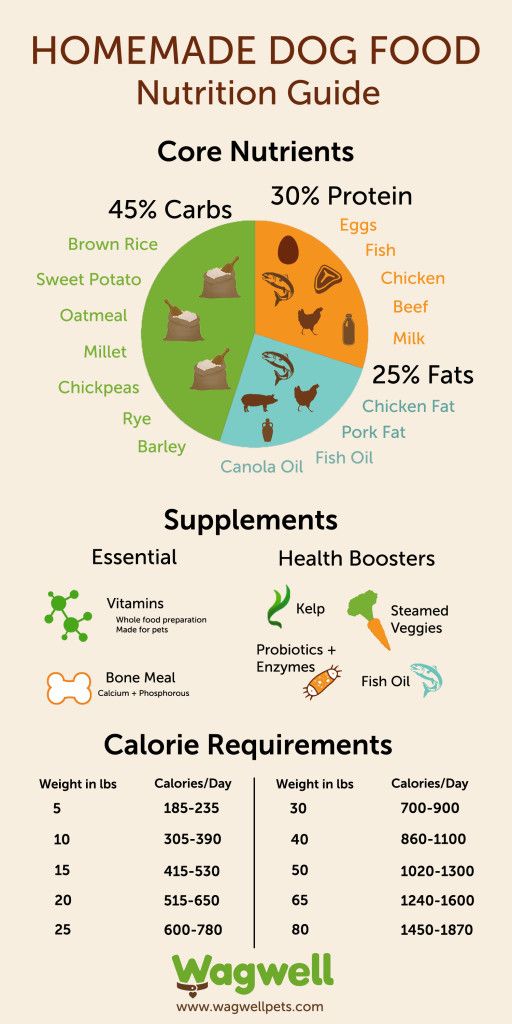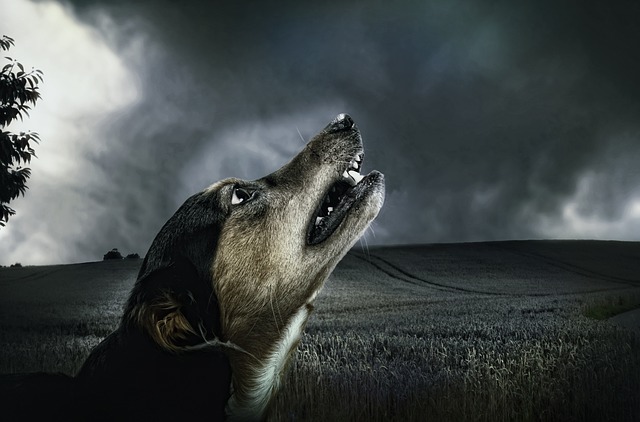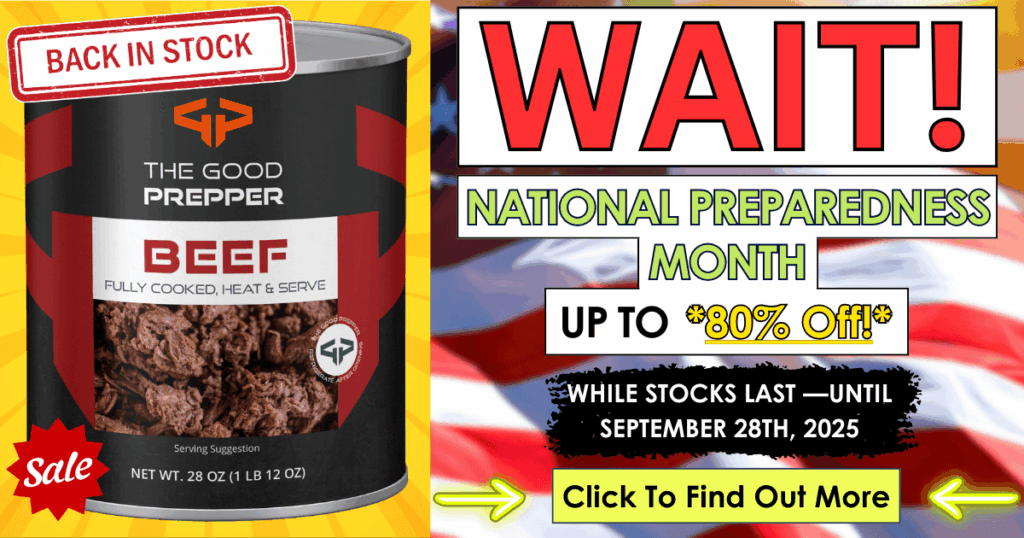Cats and dogs are often counted as one of the family. That means you need to prepare for your pets as well as everyone else. They’ll need to eat, even after the SHTF and you can’t run to the store and simply buy another 50-pound sack.
Since the fats in dry kibble quickly turn rancid, it’s not ideal for long-term storage. Canned food lasts longer, but it sure takes up a lot of space. And it’s more expensive.
What’s a loving pet owner to do? After all, vets would have you believe that you’re limited to commercial food if you want to keep your pet in good health. But if you can’t store up enough food to last for years on end.
Don’t get discouraged. With a little planning and work, you can store or raise what you need to keep your pet healthy and happy even after a crisis. Before we get to the details, let’s take a look at the very profitable pet food industry, and the actual nutritional needs for most cats and dogs.
A Quick History of Feeding Pets
Contrary to what many vets proclaim, your pet does not need pet food to thrive. Before the pet food industry exploded in popularity, people kept their animals alive just fine.
Back then, dogs were typically given bones, scraps that the family could afford to spare, and occasionally bread that had been soaked in milk. They also ate whatever else they scrounged. Their meals rarely consisted of exactly the same thing, and this variety helped them achieve a balanced diet that worked.
Cats hunted for birds and mice. They chased and ate butterflies and other insects. They were given extra milk from the milk pail, and perhaps some other scraps as they became available.
If pets truly needed commercially prepared food to survive, there wouldn’t be any pets around today. They simply wouldn’t have survived all of those years before it was invented.
But, the pet food industry doesn’t want you to know this. They are very profitable, and make lots of money by people believing the lies they’ve spread. Examining the brief history of the industry will help pet owners feel more confident in their ability to use common sense to feed their animals.
The first commercially available pet food was inspired by hardtack crackers. It was a meat, grain, and vegetable based cracker for dogs. It was easily portable, and contained nutrients that dogs needed.
A couple of decades later, canned dog food made an appearance. Horse meat was the main ingredient. In the 1930s, cat food also appeared on the shelves.
Dry kibble came after the canned variety. The tin rationing in the United States during World War II played a role in its invention. Another factor was the perfecting of the extruding process that was being used for cereal at the time.
Once dry pet food was available, the manufacturers dove into marketing. They created jingles, told everyone that table scraps would hurt their animals, and got veterinarians onboard. The public responded favorably, and started turning to commercial food as the main diet of their pets.
Nutritional Needs of Dogs
Since dogs don’t need commercial food, what do they need? As scavengers, dogs eat a variety of foods. They are opportunistic carnivores, preferring meat when it’s available. But, they’ll also eat grains and vegetables. Actually, there’s not much a dog won’t eat.
But, just because a dog can eat something doesn’t mean that it should. Many table foods are bad for pets. Chocolate is a common example. Onions and garlic (in excess) are others.
Video first seen on Veterinary Secrets.
Three Simple Recipes for Dogs
Cooking for your pup isn’t complicated. Here are three different recipes you can whip up for your dog. You can mix and match ingredients, using what you have on hand and in your food storage.
The Piles of Three
You’ll need:
- Cooked or Raw Meat (rabbit, chicken, ground beef, lamb, tuna, etc.)
- Cooked Carbs (white rice, oats, quinoa, potatoes)
- Cooked or Raw Veggies (green beans, peas, carrots)
The recipe is simple. You mix one part of meat, one part of carbs, and one part of vegetable. Then feed your dog in appropriate sized portions for the breed and size.
Doggy Stew
This stew has to cook for quite a while to get the nutrients out of the bones and make them safe for your dog. It may not be appropriate for all SHTF scenarios, but if you’re cooking on a woodstove, or have another solid supply of heat, then it’s a great way to feed your dog from scraps! You’ll need:
- Meat scraps
- A couple of potatoes or sweet potatoes cut into chunks
- Green beans
- Water
Throw your meat scraps and bones into a large pot. Cover with water and simmer for several hours, until you can crush the bones easily between your fingers. Now, add the potatoes and green beans and let cook until those are soft. Mash the stew into appropriate sized pieces for your dog, and let cool before feeding.
Leave It Raw
Many dog owners are embracing the raw food diet. This actually would work quite well in a SHTF scenario, as long as you are raising meat for your family. You’ll need a combination of:
- Raw, meaty bones (rabbit, chicken backs and feet, meaty bones from cows, etc.)
- Whole prey
- Organ meat
Your dog will figure out how to eat it Just make sure that organ meat doesn’t make up a large portion of this diet.
Nutritional Needs of Cats
Cats and dogs are different in many ways, including their nutritional needs. While dogs are natural scavengers, cats in the wild typically hunt for their meals. They are obligate carnivores, which means they need animal-based protein.
Organ meat is an important piece of a cat’s diet. They need the taurine these parts provide.
But, you don’t want to feed your cat exclusively organ meat, or any other one type of food. As you’re preparing food for your cat, strive for approximately 80% meat, 10% organs, and 10% edible bones to mimic the food they’d hunt on their own.
Video first seen on Real Pet Tips.
Three Simple Recipes for Cats
If your cat is used to being outdoors and mousing, that’s a great way to provide a large chunk of its diet. Eating the organs, bones, and meat of the prey will help meet your cat’s nutritional needs. If that’s not possible during a crisis situation, you’ll need to prepare food.
A good quality meat grinder that can handle bones will make preparing this food easier for you and your cat. This is especially important if your cat isn’t used to chewing on large chunks of meat or small, raw bones. As they adjust to the diet, you can slowly transition to larger chunks.
It’s important to note that as a hunter species instead of a scavenger one, cats prefer warm or room temperature food. Many cats won’t touch cold food. To warm your homemade food, place it in a resalable container and submerge it in warm water for thirty minutes before feeding.
You’ll notice that meat is the star of all these recipes. Cats need meat. If you give your cat other foodstuff, that’s fine for a treat. Cats even eat grass occasionally! But the bulk of what they eat should be meat.
Canned Fish & Liver Meal
Canned fish makes a simple base for your cat’s diet. Look for a variety that includes the bones and skin, which will provide the calcium and fat your feline needs. Canned salmon, sardines, and mackerel often meet this requirement. The liver is added for the taurine, and is an important addition. You’ll need:
- A can of fish (undrained)
- A tablespoon of ground chicken liver
Mix the ingredients together and mash the large chunks before feeding.
Raw Chicken, Liver, & Heart
This recipe can make use of the liver and heart of any animals you are butchering, and some cooked chicken. You’ll need:
- 2 pounds of bone-in raw chicken thigh
- 3 ounces raw chicken liver
- 6 ounces raw chicken heart
Grind all the ingredients in a heavy duty meat grinder and feed.
Rabbit Feed
Rabbit is an ideal meat for your cats. It’s a great proportion of muscle meat, organs, and edible bone. You’ll need:
- One rabbit (organs and bone included)
- Grind the rabbit. Feed in appropriate sized portions.
Transitioning Feed
If your animals are currently on a commercially prepared diet, you’re going to want to stockpile a bit. That way you can slowly transition to this new way of eating over the course of a month. Your animal’s system will adapt better when you go this route as opposed to a cold turkey switch.
Cats are especially prone to turning their nose up at unfamiliar food. You might consider feeding your cat one of the above recipes for one meal a week now. That way when a crisis arises, the new food won’t be completely new.
Long-Term Feeding Tips
When you’re preparing for your pet, you’re going to want to make some long-term plans. Most pets will be a part of your family for many years, so think beyond a year or two.
If you have the space and ability, raising your own rabbits or chickens will help feed your pets along with the rest of your family. You can also let your animals hunt, keeping the rodent population down around your homestead.
By canning your own meat now, you’ll be able to build a stock-pile of meat. This can be used as a supplement to your pet’s diet when necessary.
If you have a dog, as you build your food storage, throw in extra rice and vegetables. Stored properly, dry rice and canned or dehydrated vegetables will last a long time.
Don’t Forget the Water!
Just like you need plenty of water for survival, your pets do too. It’s essential that you have a water supply on hand that’ll meet the needs of everyone in the household and all your animals.
Do you have a backup water plan? Do you have a way to filter water? Start making plans now before it’s too late.

Do You Make Your Own Pet Food?
By thinking outside of kibble, you can make a viable long-term feeding plan for all the pets in your life.
Do you make your own pet food? What are your solutions for long-term feeding? I’d love for you to share additional tips and tricks in the comments section below.
This article has been written by Lisa Tanner for Survivopedia.










Dee | June 24, 2016
|
Great article! I began making my own dog food a few months ago to supplement my pups’ commercial kibble. While it is very high quality, human-grade, none of the corn, soy, or “meal” crap in it, I began to feel strongly for health reasons that they needed to get more fresh foods. I’ve progressively reduced the % of kibble and increased the % of homemade food. I just make it in a large crockpot–a combo of chicken or turkey with rice, oats, or quinoa, plus various veggies. The veggies are usually green beans, peas, or carrots, but I’ve thrown in sweet potatoes and kale as well. Even my newest guy who was a picky eater when we adopted him pretty much inhales this mix. They love it and they are thriving on it.
Vicki Gibson | June 28, 2016
|
People up north do not feed their sled dogs anything but fish over the long winter and maybe a few bones from elk, bear, caraboo etc. They do not eat kibble as the cost to get it in is way to expensive.! These dogs do JUST FINE on the fresh frozen fish etc that they eat. The meals are sometimes cooked up into stews. People cannot afford to throw anything away. They are way more prepared than most of the world when it comes to surviving. They have to be in such cold climates and extremely short summers.
TP | June 24, 2017
|
I started making food for my little Pomeranian when she become diabetic…I modified a recipe I found online and came up with this:
Homemade Dog Food for Diabetic Dogs
30 cups water (add a little more if needed)
2 bags (1 pound each) brown lentils, rinsed
2 bags (1 pound each) black-eyed peas, rinsed
2 bags (1 pound each) green split peas, rinsed
1 box barley (instant)
5 pounds boneless chicken breasts, cut into 1/2″ cubes
1 pound ground turkey
1 can (29 ounces) Libby’s 100% Pure Pumpkin
2 bags (16 ounces each) frozen crinkle cut carrots
2 bags (16 ounces each) frozen green beans
1-2 packages (10 ounces each) frozen chopped spinach
Pour water into a large stock pot. Bring to a boil over high heat.
Add brown lentils, black-eyed peas, and green split peas. Reduce heat to medium, stirring occasionally. Cook till done.
In another pot bring some water to a boil and cook the frozen vegetables and barley till most of water is absorbed.
Spray a skillet with cooking spray and put in cut up chicken. Add ground turkey and cook while stirring till both are done.
I got at large tub with rope handles at Dollar General that I dump all these in after letting them cool enough to put my hands in without getting burned.
Add the pumpkin.
This is where I used my hands and scooped down into everything and stirred it around to mix well by hand.
I packaged it up into single servings for my dog and put them in the freezer. When I wanted to feed the dog I would take one out and microwave it enough to make it slightly more than lukewarm. Stir well.
Modified to suit my dog from this recipe: http://myuntangledlife.com/homemade-dog-food-for-diabetic-dogs/